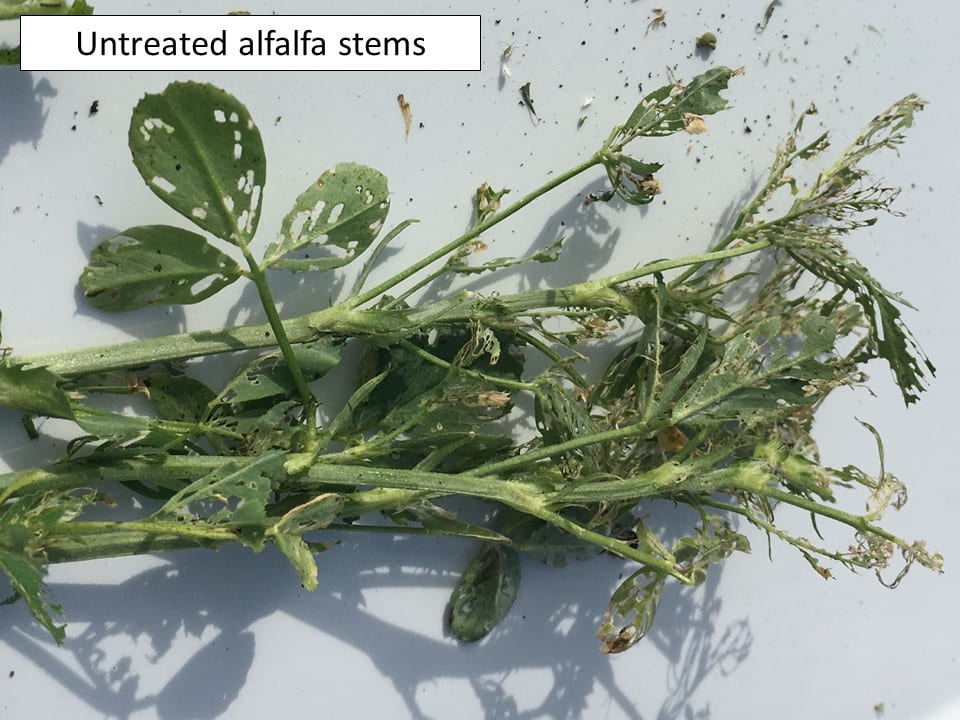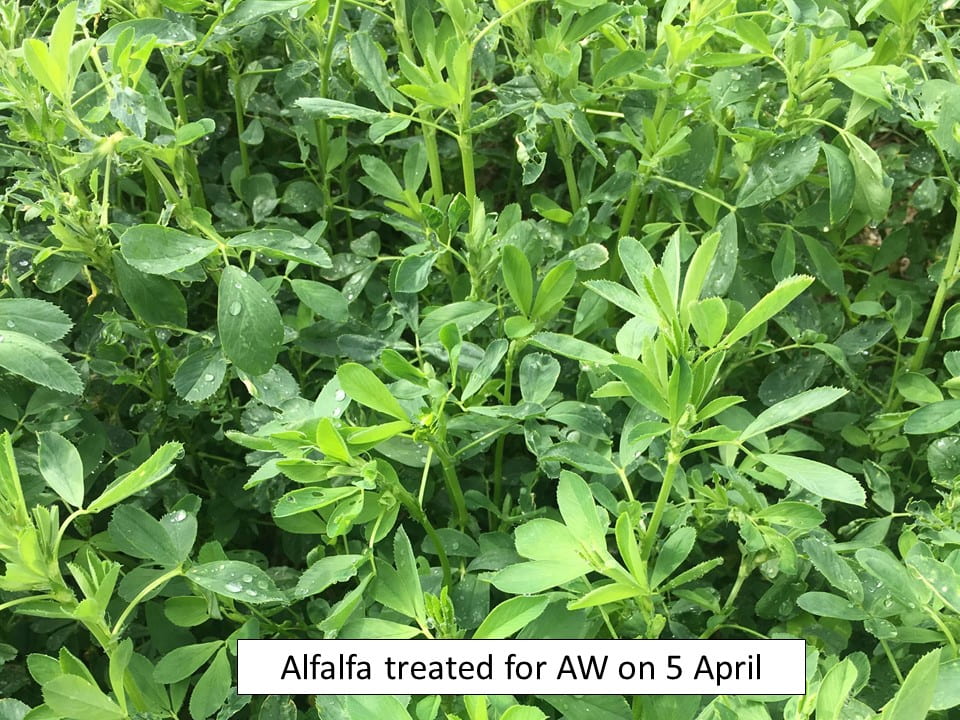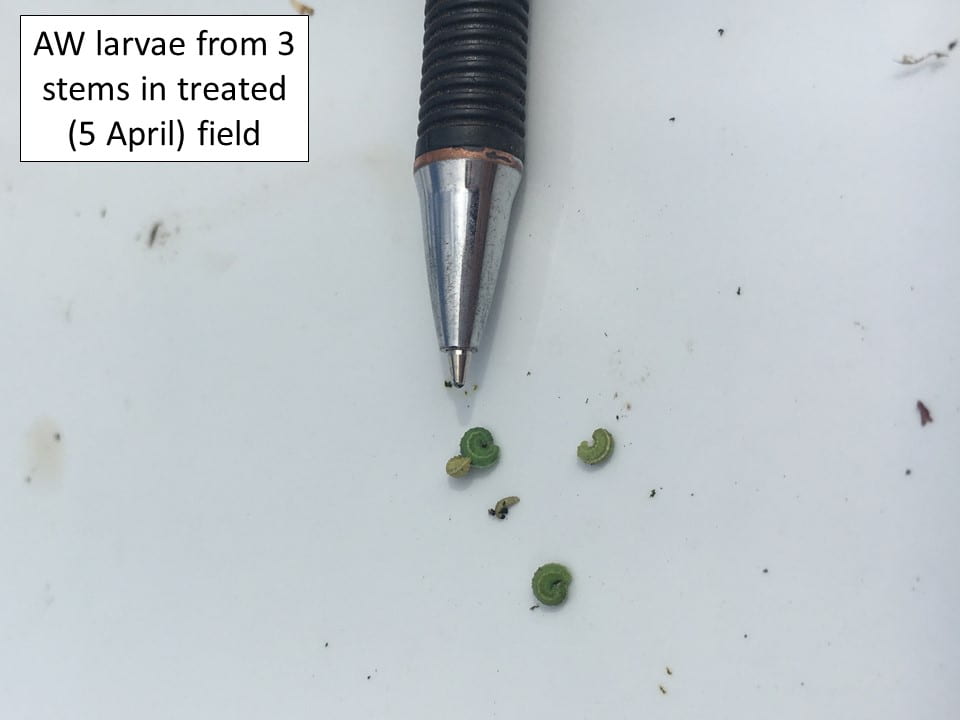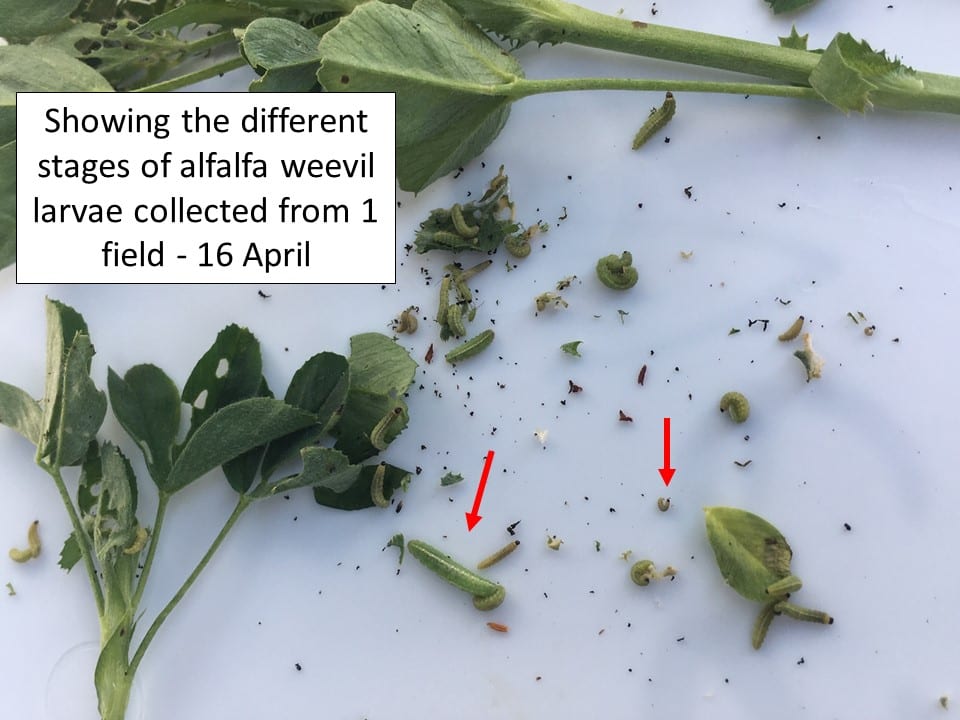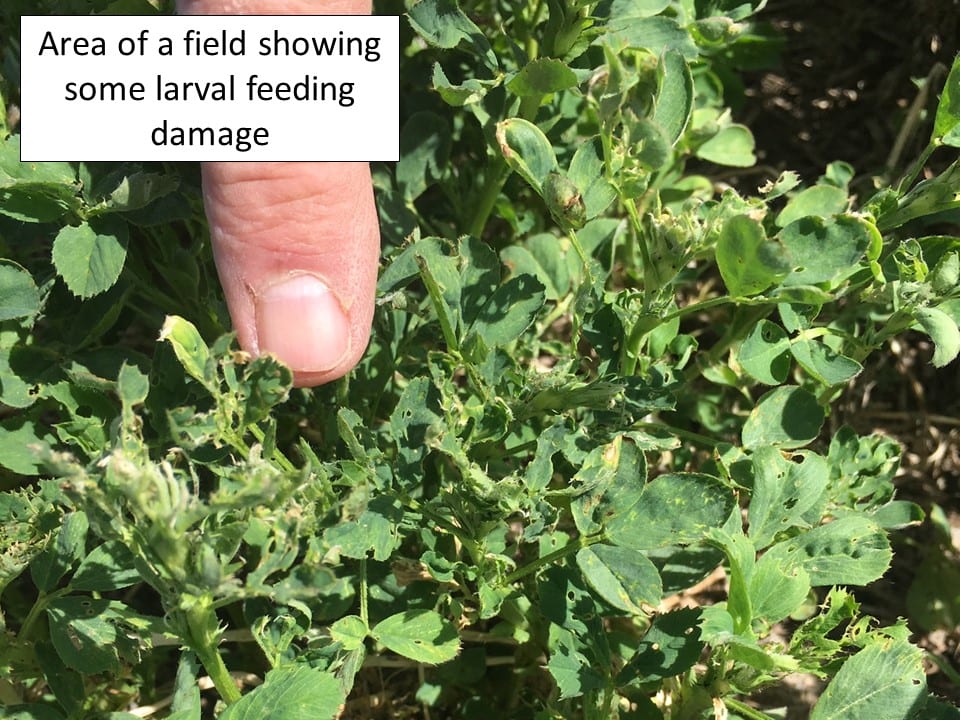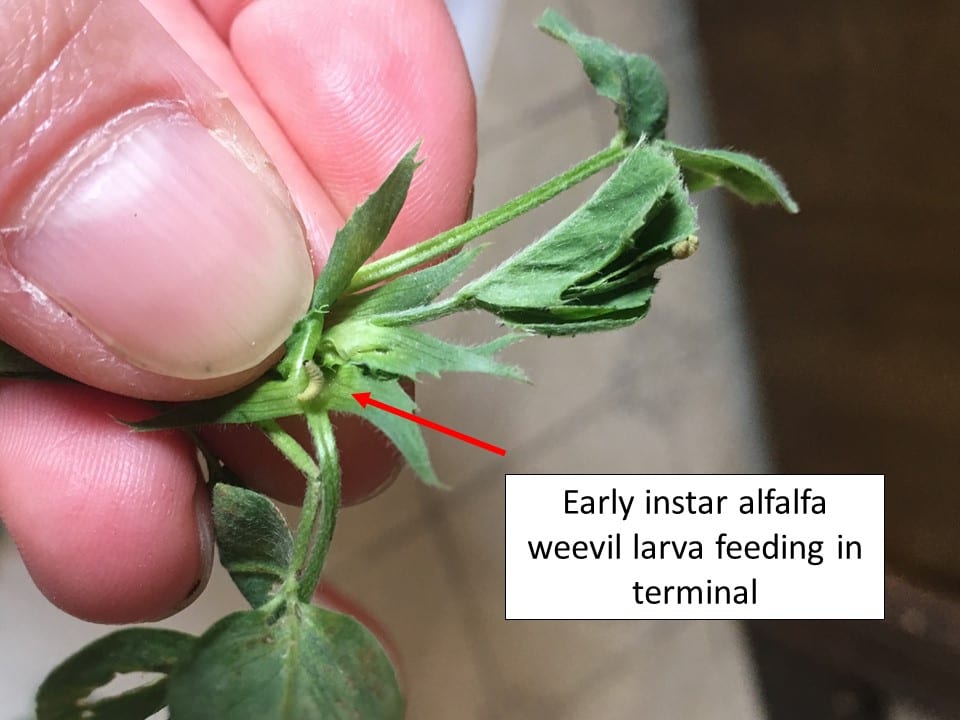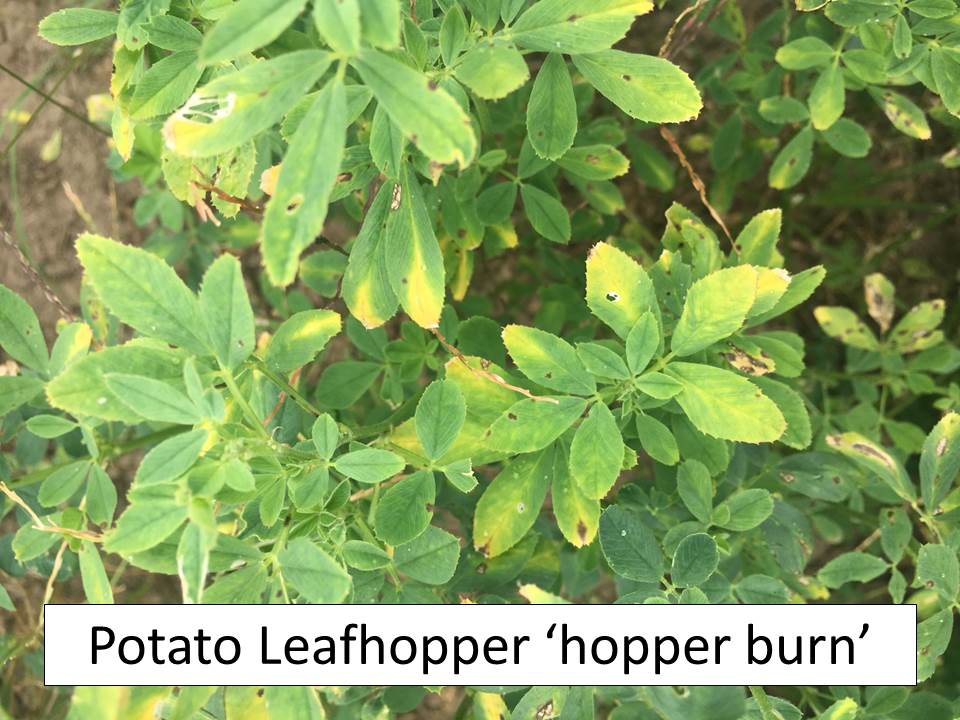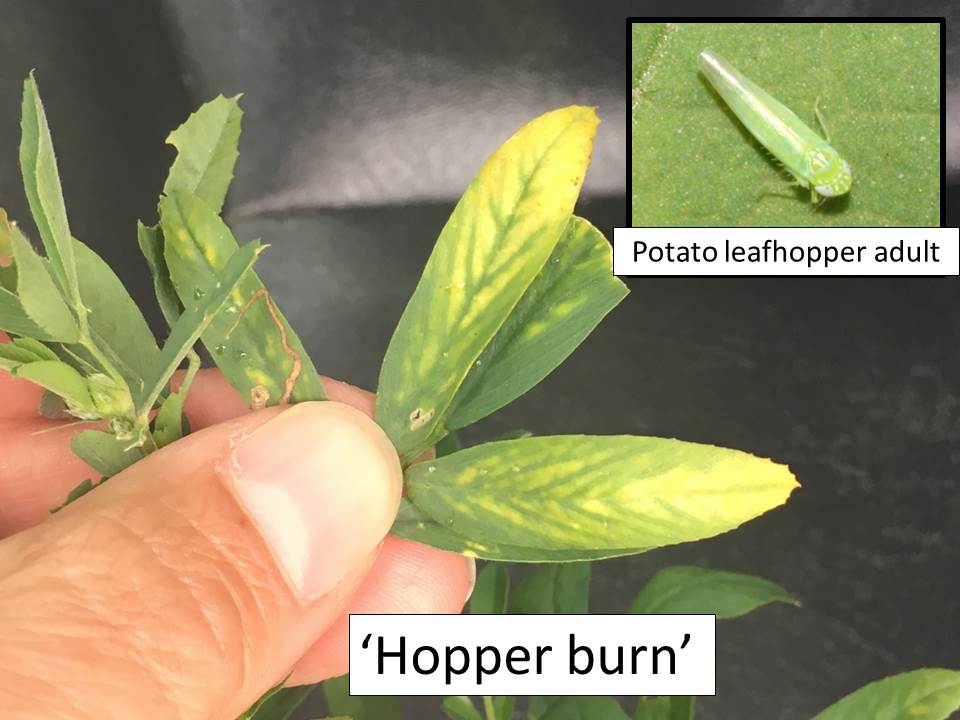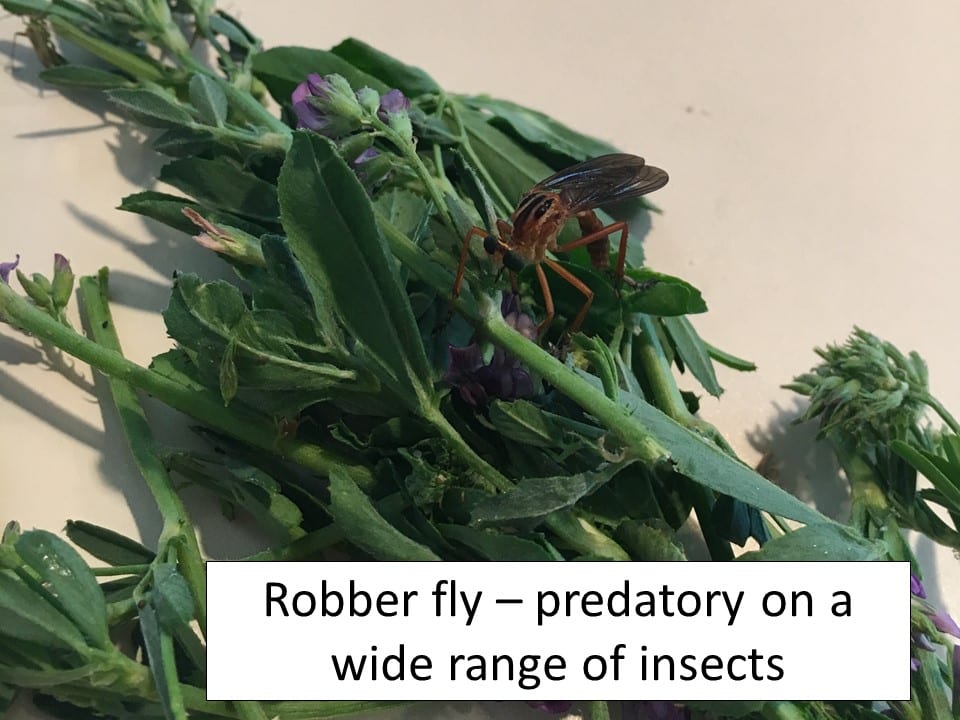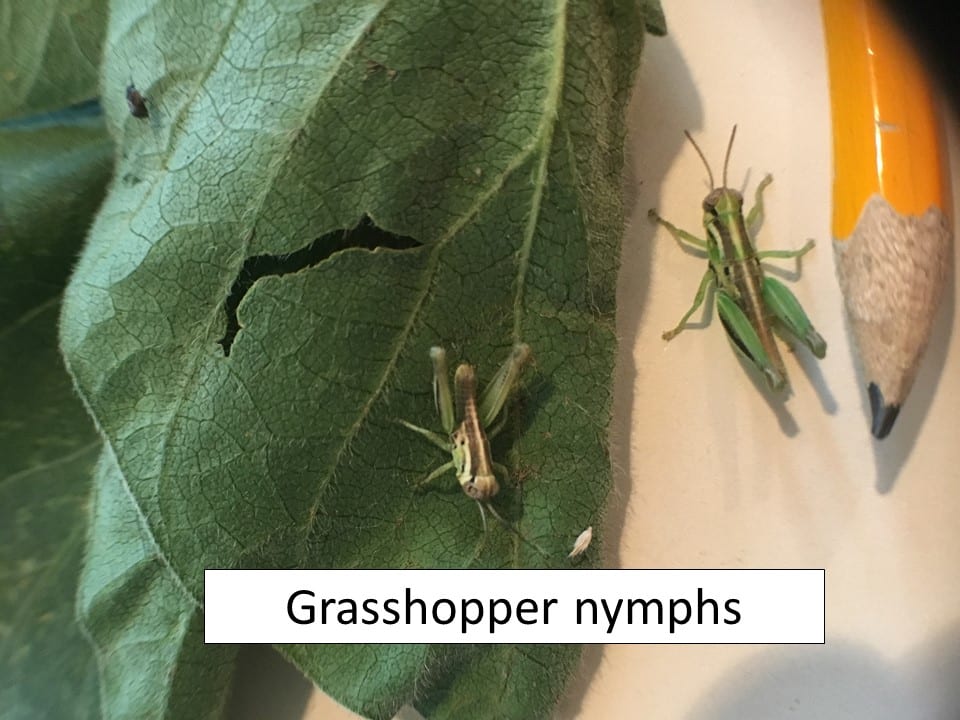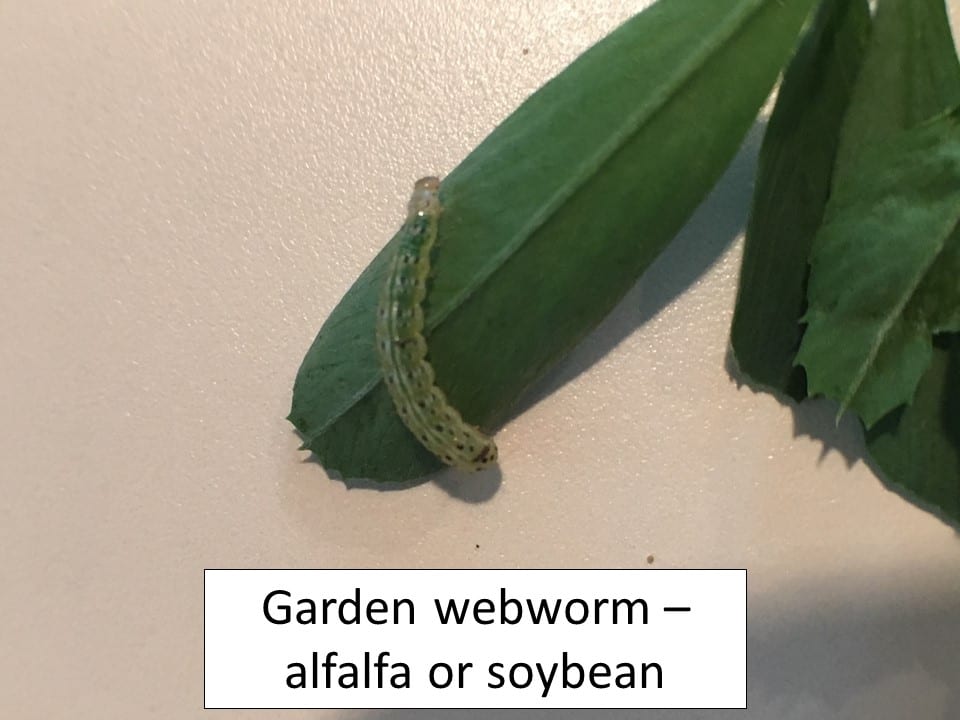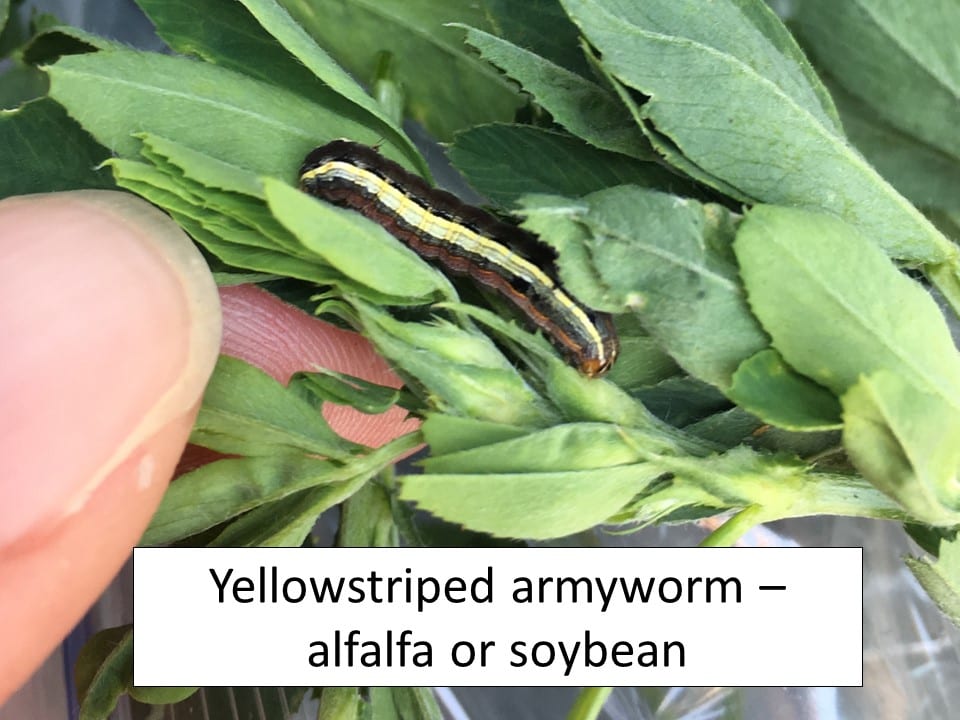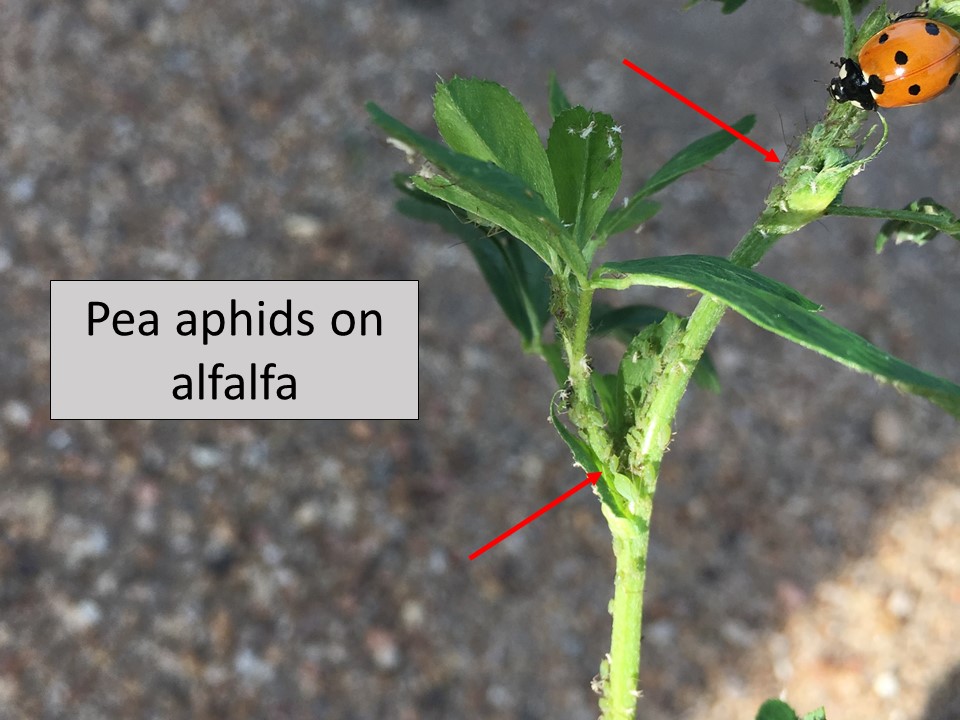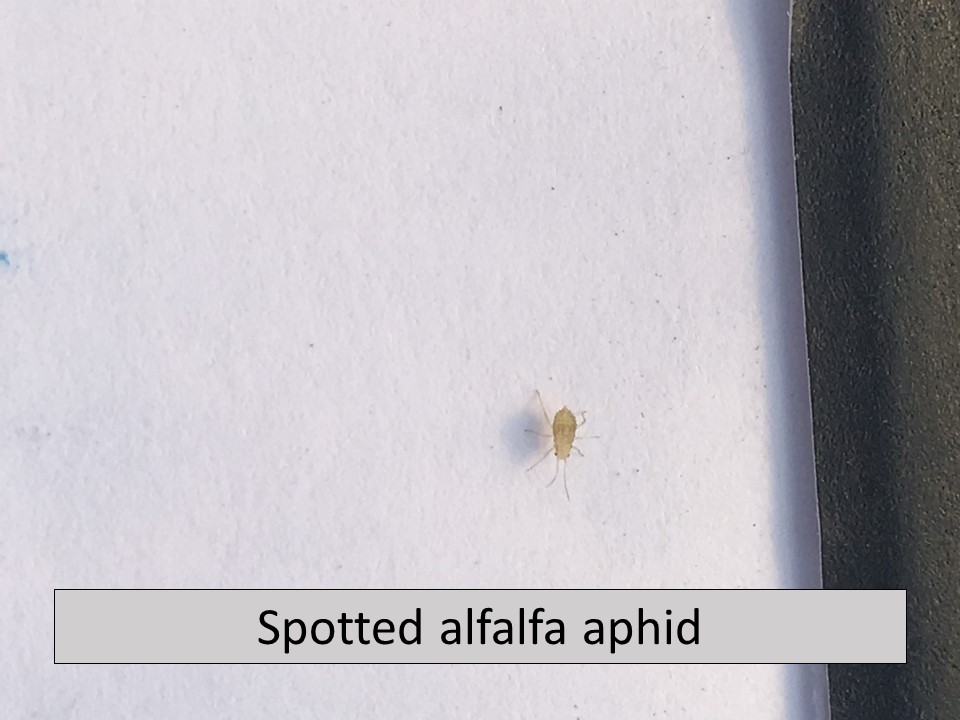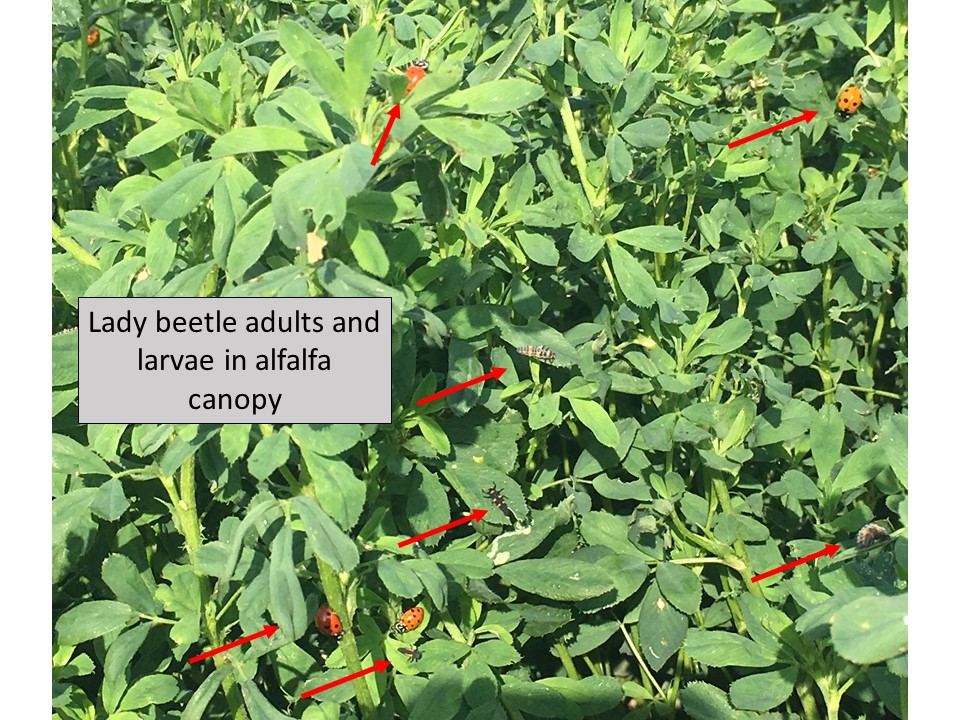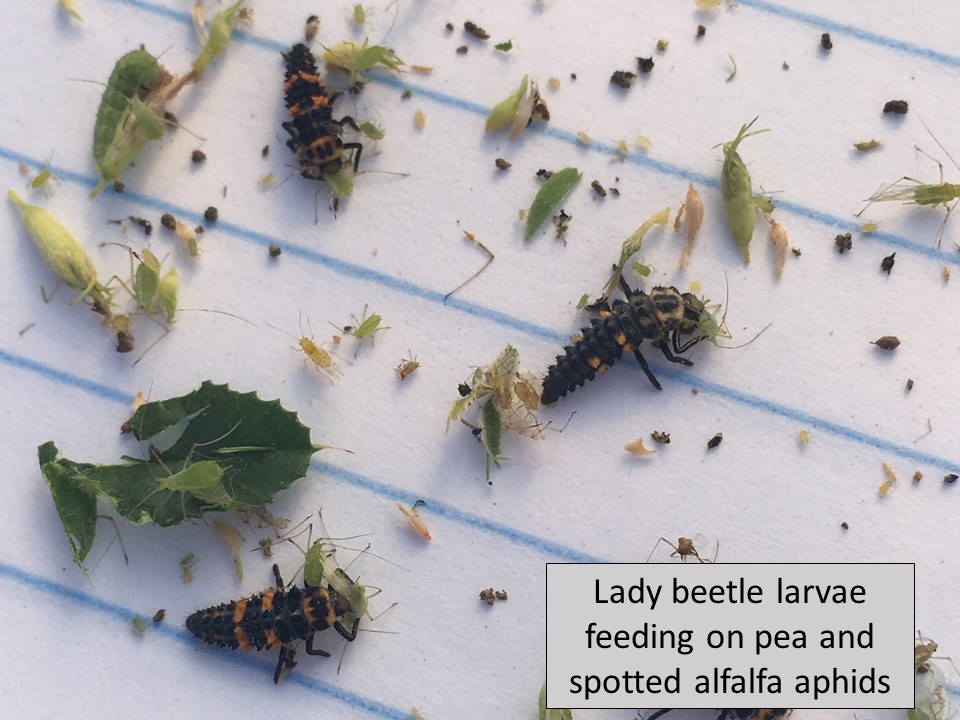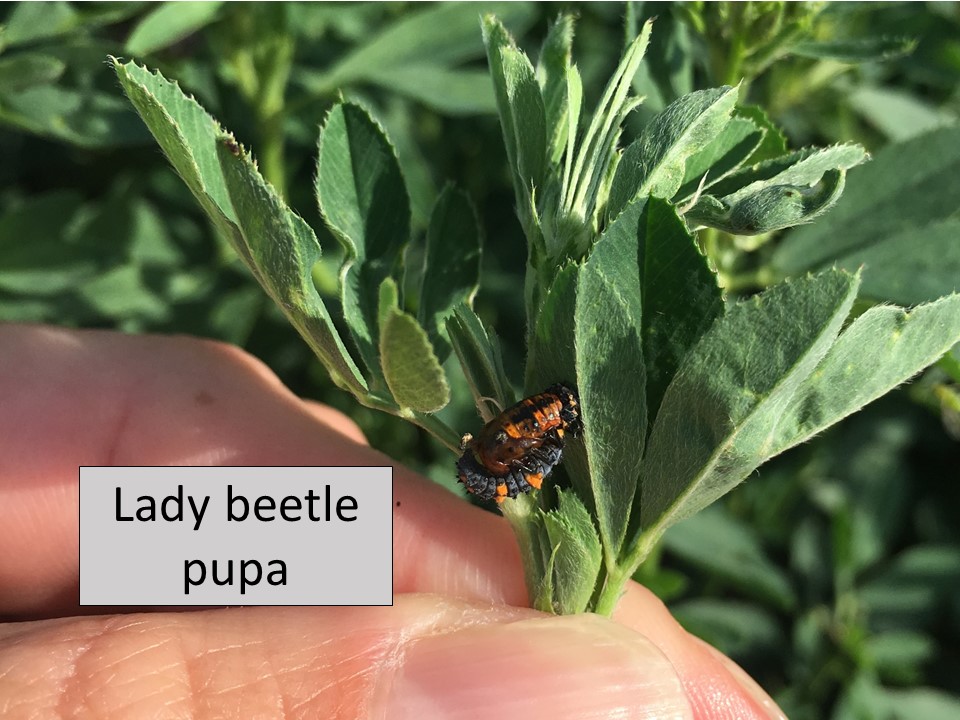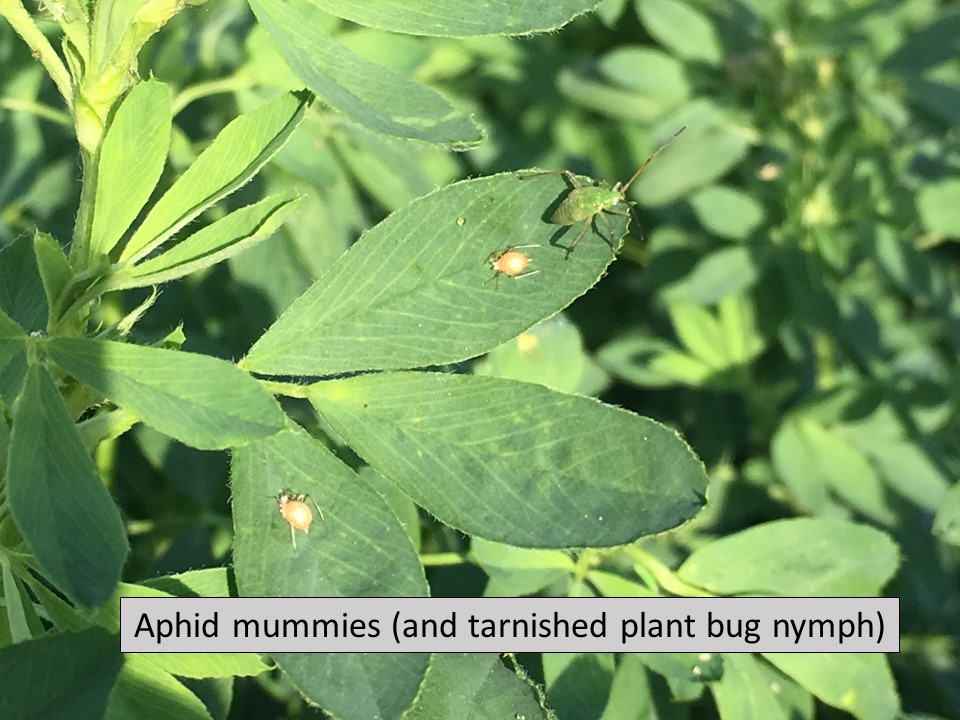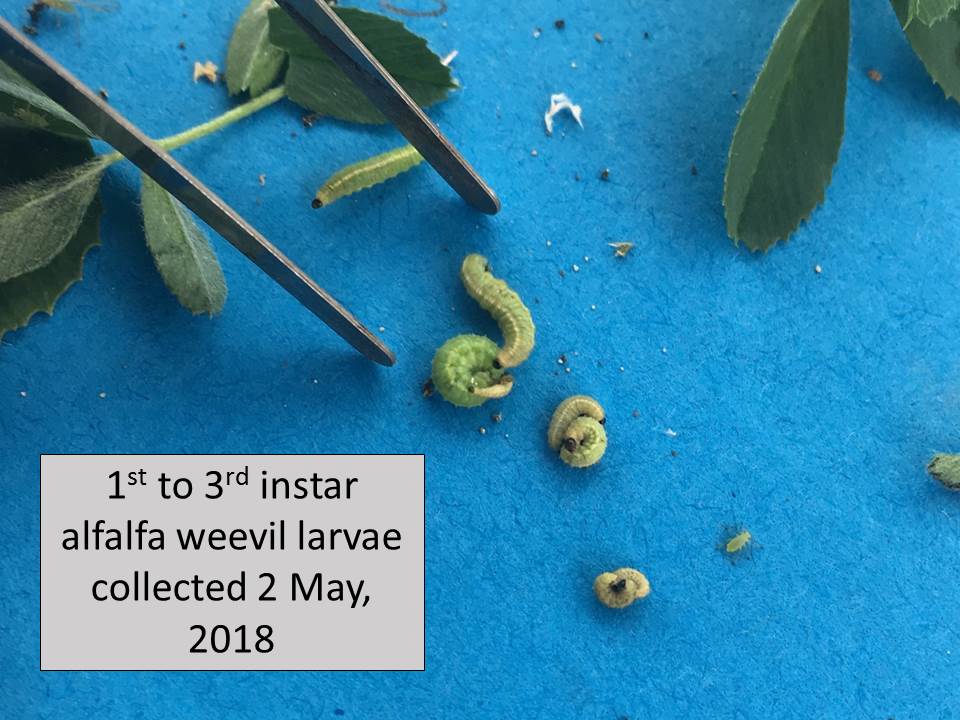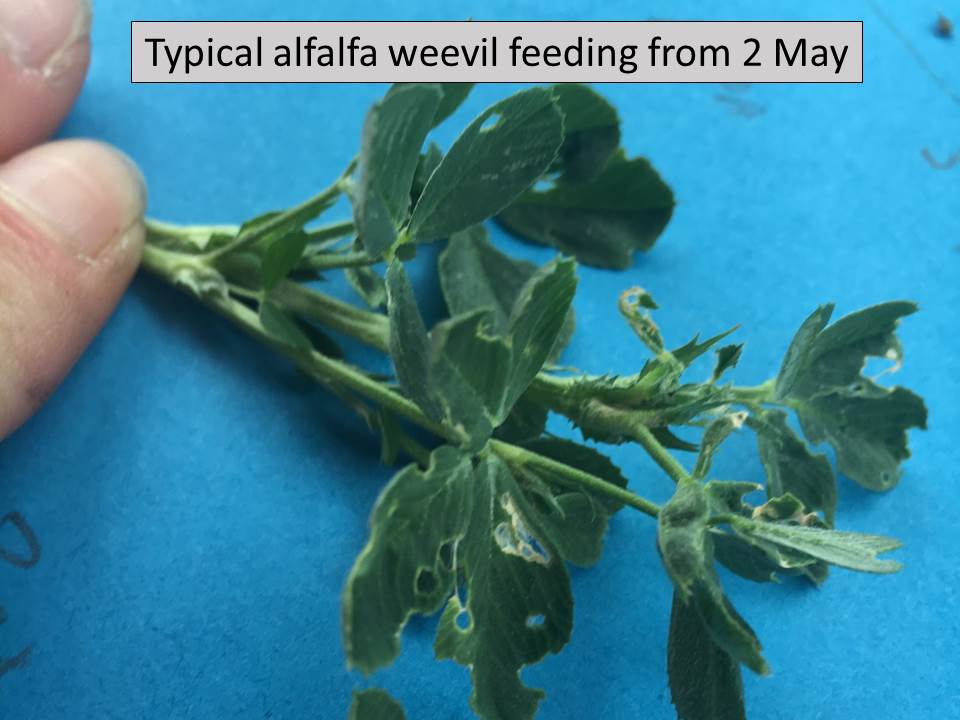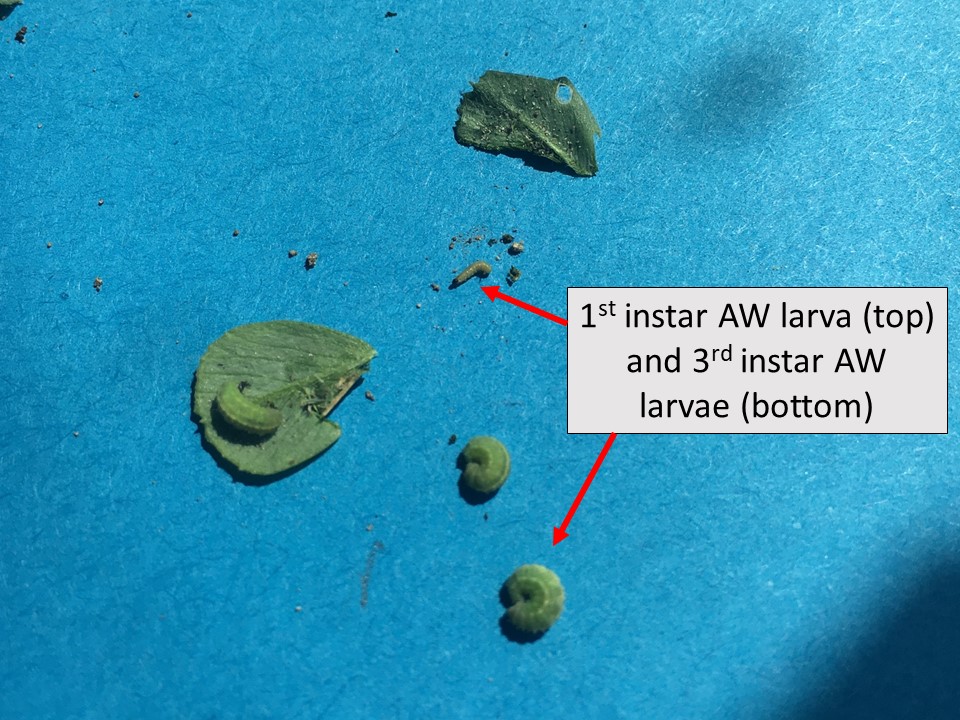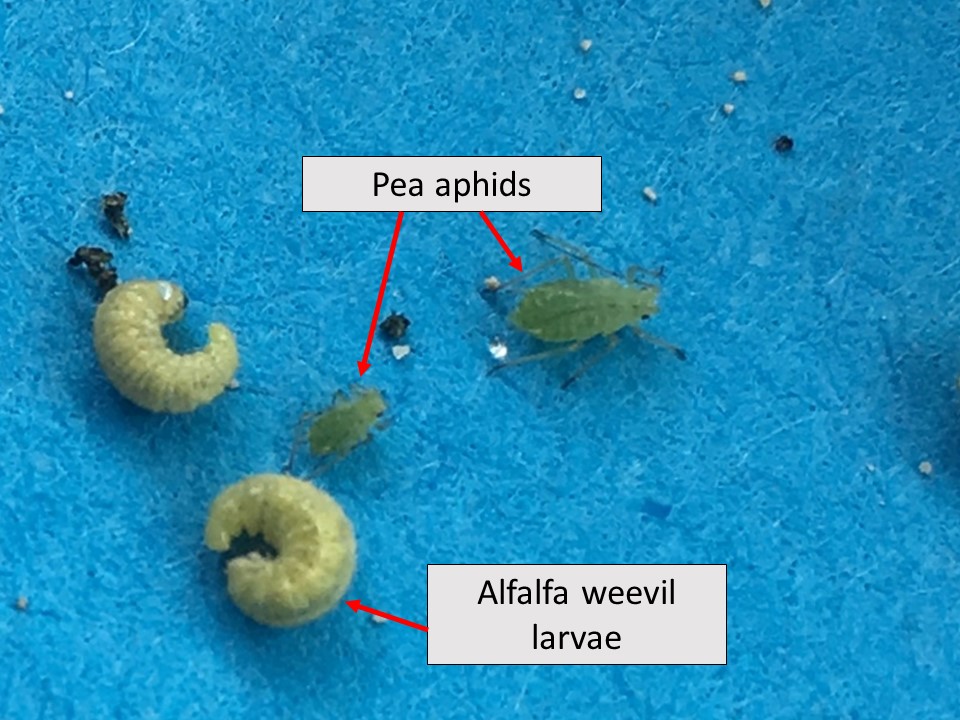— by Dr. Jeff Whitworth and Dr. Holly Davis
Alfalfa weevil development is/has proceeded quite rapidly, and many fields have required an insecticide application. Pictured here is a representative sample of alfalfa plants from a non-treated field and a close-up from that field.
Using the stem shake bucket method of sampling, this untreated field still had an average of 8+ larvae/stem at different developmental stages. Plus, pupation had already begun in that field.
In contrast are the plants representative of a field that was treated on 5 April, which had already exceeded the 1 larva/ 2 stems, or 50% infested, treatment threshold. However, larvae are still hatching and developing, and the feeding damage is starting to become apparent again.
Thus, alfalfa fields should continue to be monitored for at least another 10-14 days for the need of a 2nd insecticide application or, if possible, swathing. If insecticide applications are deemed warranted, be sure to check the label for the pre-harvest interval (PHI) requirement for the insecticide used.
For more information regarding alfalfa weevil management please refer to the KSU Alfalfa Insect Management Guide: https://www.bookstore.ksre.ksu.edu/pubs/mf809.pdf

